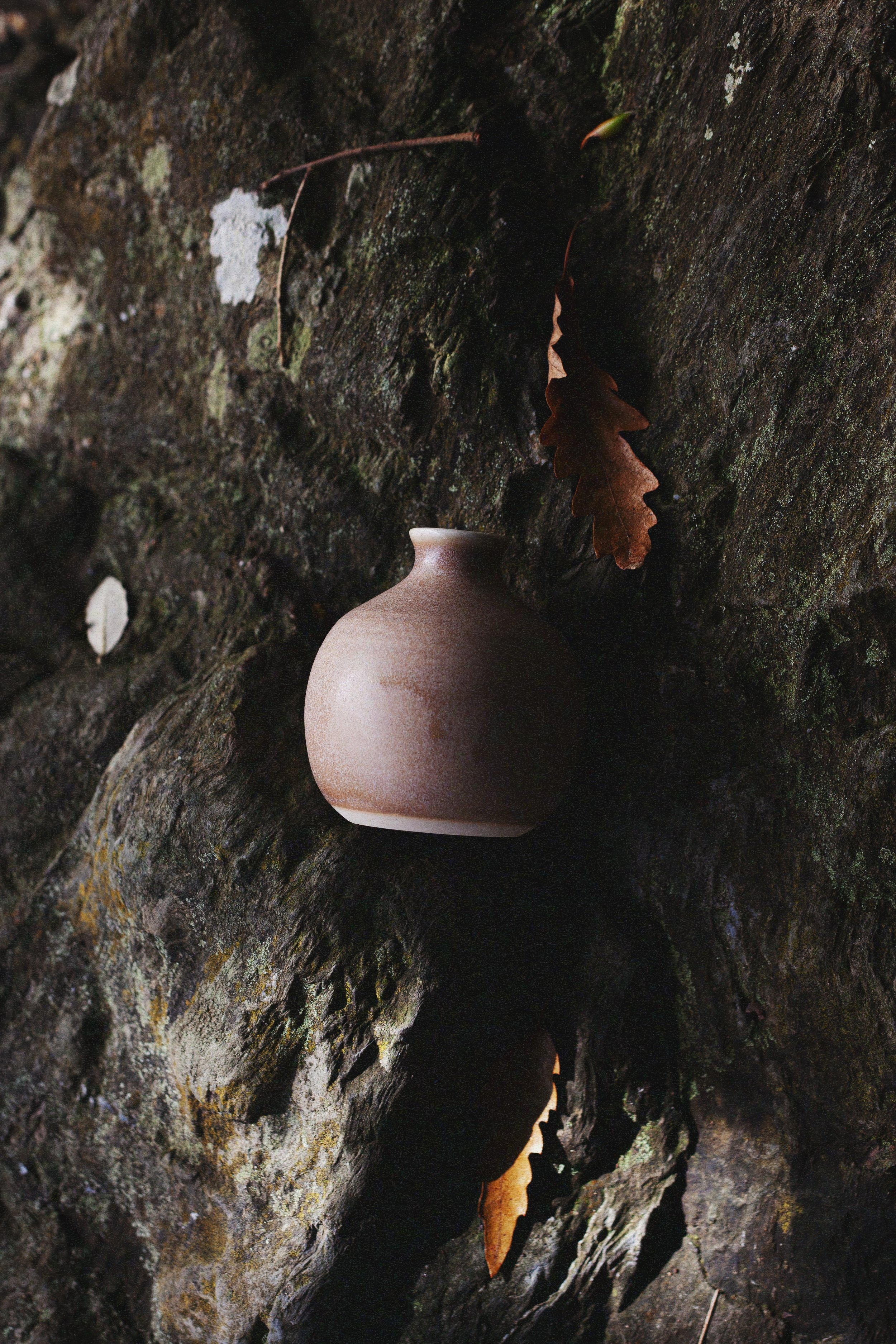A new collection - introducing the Winter glazes
My new collection, being more earthy and neutral than my previous work, feels connected to landscape in a way I haven’t felt in my work for a long time. In fact, these pieces remind me of my very earliest ceramic work, made when I was still an art student, using found pigments from the landscape in my slips and glazes.
My previous glazes ‘Glas’ (Cornish for: Green, Grey, Blue: Colours of the Sea) and ‘Porth’ (Harbour) were my first experience dipping my toe into using Cornish words for glaze names, but back when I was making paintings at university I used Cornish words fairly frequently as my work was so inspired by the Cornish landscape, Land Art & Place.
My wonderful friend Rachael is an avid Cornish language student, and with her very kind help and guidance I’ve put together a selection of Cornish names for these new glazes, honouring their inspiration - salt, sea, storms, sand, Winter in Cornwall.
Bud Vase in ‘Glas’ - Meaning Green, Grey, Blue - Colours of the sea/living things
Glas is a glaze name I’ve used previously - but it’s one I simply couldn’t imagine retiring for this collection. This wonderful word encompasses many colours in the Cornish language. It means: ‘Green, Blue, Grey, Colours of the Sea/Living Things’.
Previously my Glas glaze was a cool, light, stormy grey. Now, it is a deep teal blue-green, with hints of dark grey/black in areas where the glaze is thicker and has pooled into throwing lines and ridges on the pot. Both Glas in their own right, and a celebration of this beautiful Cornish word and the intricacies in it’s meaning.
Dimple Cup in ‘Mor’, meaning Sea in Cornish
Perhaps a glaze that needs the least introduction. Mor is a deep, variegated blue. Indigo toned, with a silky texture and beautiful movement. Inspired by, and named after, the sea.
Bud Vase in ‘Tewyn’, pronounced ‘Tow-in / Tow - (as in Porthtowan) -in), meaning Dune in Cornish
A speckled, mottled neutral. Sandy and dusky. An accident glaze in a way - I was doing a line blend of oxide additions to my base glaze, which means you add small amounts of colourant like red iron oxide (say 0.25%) and test as you go to find the perfect balance.
This was a surprise glaze recipe I got as part of that line blend, but I loved it so much on the test tile that I mixed up a bigger batch of it to include in this collection.
Short Mug in ‘Karn’, meaning Stack/Heap of Rock in Cornish
Karn. A soft, speckled, mid-grey glaze which breaks to warmer tones around the rim where it melts into the glossy glaze on the interior of the piece. This one took quite a bit of tweaking to get it to this final stage, but it’s exactly what I envisioned when I first set out to create it.
Inspired by the many rock faces that line our coast, organic and variegated in their tone and texture.
Dimple Cup in ‘Holan’, pronounced Hollen like Pollen, meaning Salt in Cornish
A soft, warm white, with crystallisation details on the surface where it the glaze is thicker and pools, like on the inside of the thumbprint on this dimple cup. Inspired by salt filled sea air on a blustery Winter's day by the coast, Holan is the most understated glaze in the collection - difficult to capture it’s magic in a photograph.
Short Mug in ‘Niwl’, meaning Mist or Fog in Cornish
Niwl, the sixth and final glaze to feature in the new Winter collection. This one was difficult to name, as it encompasses many things… Moss, Lichen, Stormy Seas… with it’s blue-green-grey tones. In fact, it could be another ‘Glas’. But I finally settled on Niwl, meaning Mist or Fog in Cornish. It also has the same translation in Welsh - it’s been so interesting to discover so many crossovers here when naming my new glazes.
A soft, green-grey glaze with hints of blue bleeding through the surface, particularly around the base of the pieces and wells of the handles, where the glaze has melted and pooled during the firing.





